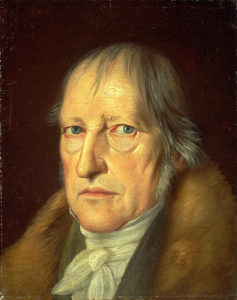 Nonfungible tokens (NFTs) are all the rage these days. People are paying millions for NFTs that exist mainly as bits and pieces of computer code. At times like these, it’s useful to keep Gartner Group’s Hype Cycle in mind. A new idea is being hyped. Is it all smoke? Or is there some fire beneath it?
Nonfungible tokens (NFTs) are all the rage these days. People are paying millions for NFTs that exist mainly as bits and pieces of computer code. At times like these, it’s useful to keep Gartner Group’s Hype Cycle in mind. A new idea is being hyped. Is it all smoke? Or is there some fire beneath it?
Without being overly technical, let’s look at the attributes of any item (token/document/image/currency, etc.) stored in a blockchain. Here’s what you get:
- It’s indelibly time-stamped – anyone, anywhere in the world can verify exactly when the item was added to the blockchain. It follows that the item (whatever it is) must have been created before that date.
- It’s unmodifiable – when we write checks, we use ink because it can’t be modified. The blockchain brings the same benefit to digital items.
- It can’t be eradicated – nobody can destroy an item stored in the blockchain.
- There’s only one original – you can make copies, but the original is the real deal. And the original is easy to identify.
- Any transaction involving the item (a sale, for instance) will similarly be time-stamped, unmodifiable, and ineradicable.
What kinds of items would benefit from these attributes? Here are some categories:
- Legal documents – any document stored on the blockchain is essentially inviolable. We know its entire history and anything/everything that’s been done to it. I can foresee a future where only blockchain-stored documents will be legally enforceable. Indeed, I think I’ll store my will as an NFT so there can be no debate amongst my heirs as to what my intentions are.
- Ownership records – property records can result in unending discord if there’s any doubt about their veracity. For instance, if land ownership records disappear, how do we decide who has the right to use the land? The Peruvian economist, Hernando de Soto, suggests that land titles and deeds should be stored in a blockchain to preserve their integrity.
- Idea precedence – the entire scientific establishment is driven by idea precedence. Who made the discovery first? Who can claim credit for creating a new idea? Millions of dollars in royalties and patent rights can ride on date stamps. Blockchain dates are easily verified and inalterable.
- Artwork – a newly discovered Van Gogh painting recently sold for $19 million. Yet I can buy a nice poster of the same artwork for roughly $20. We all know that the original is worth much, much more than a copy. Yet how do we know if a digital item is an original? The blockchain knows. Indeed, this is the use case for the current NFT mania – it differentiates the digital original from digital copies.
- Provenance – where did the item come from? Whose hands did it pass through? Was it stolen or did it come to market legitimately? Dealers in historical artifacts wrestle with these questions every day. A token on the blockchain can record not only the item itself but also everything that has happened to the item over time.
Ultimately, the blockchain is about trust. Do we trust paper documents to accurately record who owns a piece of land? Or whether Scientist X created an idea before Scientist Y? Or whether an artwork can legally be sold? Once the hype settles down, I think the true value of the blockchain is that it can help us verify facts, enforce legal rights, and establish a climate of trust. That’s not hype.




Recent Comments